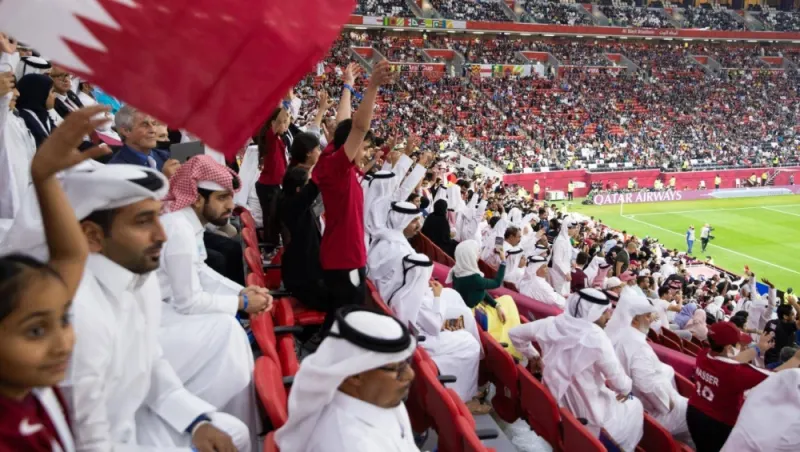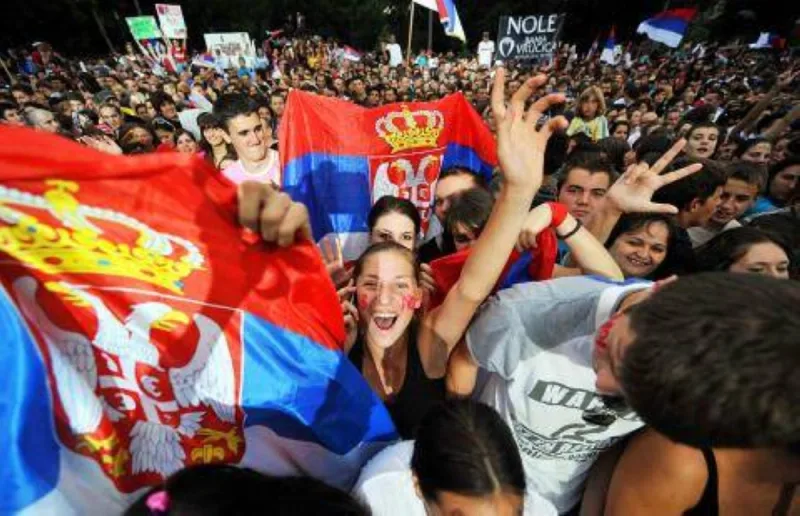The FIFA World Cup Qatar 2022, which was held for the first time in the Middle East and the Arab world, represented an unparalleled opportunity to introduce the entire world to Arab culture, hospitality and traditions and the tolerance of the Islamic religion.
Arab fans who flocked to Doha during the tournament painted an ideal picture of Arab heritage and culture on the one hand, and of the culture and civilization of their countries on the other hand, and promoted the true image of the Arab world.
Given the outstanding ability of sport to build bridges of communication across cultures, enable individuals to exchange their points of view, and help others explore more about other cultures, FIFA World Cup Qatar 2022 had a great impact on Arab and Western fans at the same time in introducing their cultures and integrating with other cultures.
Qatar, which turned into a sports arena during the tournament, especially in the fan zones, around the eight World Cup stadiums, on Doha Corniche, and inside local markets such as Souq Waqif, reflected the power of sports and its impact on spreading the Arab and Qatari culture to the world. This was clear in the interaction of Qatari families with the event and their invitation for fans to visit their homes and learn about the local customs and traditions closely.
The country's heritage also contributed to introducing World fans to the history of Qatar, the Gulf and Arab region, especially the events related to camels, horses and falcon racing, as well as artistic and cultural exhibitions, and promotional and interactive displays to introduce visitors to Qatari culture in particular, and the Arab culture in general.
The bisht that Lionel Messi, captain of the Argentine national team, wore during his countrys victory in the FIFA World Cup Qatar 2022, the Ardha dance in the fan zones and around the stadiums, and the Arabic coffee and (Harees) spread in various popular markets and Qatari restaurants, were the most prominent features that the World Cup fans interacted with in a different way. Many were keen to get a bisht and an eqal before returning to their country as a souvenir of the global event.
The Qatari role has emerged significantly in many individual initiatives for the fans or collectively for some bodies and institutions, in introducing the tolerance of Islam and its values, which influenced visitors to Qatar during the World Cup period, and changed their perceptions of Islam and Arab culture.
Some institutions organized campaigns to introduce the World Cup fans to the religion of Islam in the stadium areas, while others issued an electronic religious booklet translated into 6 main languages: English, French, Spanish, German, Russian, and Portuguese, each link contains a language-specific brochure for introducing the Islamic religion under the title "Understanding Islam."
Qataris were not the only ones who exported their culture to the world during the World Cup, other Arab countries that participated in the World Cup such as Saudi Arabia, Morocco and Tunisia, Likewise, the Arab countries that did not participate expressed their culture and civilization through their fans who were in Qatar to support the first World Cup in the Arab world.
During the tournament, Saudi Arabia introduced the World Cup fans to its cultural, lyrical and sporting heritage through the "Saudi House", which serves as a fan zone to promote the culture and civilization of the Kingdom, through artistic and folkloric performances, including the performance of the Najdi, Samari, and flute displays, as well as folk art with dances that embody Saudi songs and heritage.
In addition to Saudi Arabia, the Tunisian and Moroccan fans had strong attendance during the World Cup, succeeding in expressing their culture and heritage in the best way. Tunisian folk arts, which were developed over the ages and passed down through generations, appeared in stadiums and various regions of Qatar, the most prominent of which was the Mizwad musical instrument.
The Mizwad is known as an artistic expression that reflects social and cultural reality, as well as the social feelings towards major events such the Qatar World Cup, the first edition of the tournament to be held in the Arab world.
The Tunisian fans expressed their different customs, traditions, and culture during the World Cup to all fans from around the world, especially with regard to the traditional Tunisian outfit, which consists of the jubbah and chechia, as well as popular foods, such as the Tunisian couscous.
As for the Moroccans, they got a major opportunity to share their culture and traditions, especially in light of their national team attracting all attention with its unexpected success in the World Cup by reaching the semifinals and occupying fourth place.
The red fez worn by the Moroccan fans was one of the most prominent traditions that the world learned about Morocco. It is a famous and prominent symbol for Moroccans, and it is worn at weddings or graduation ceremonies. Moroccans were keen to wear it during the World Cup in light of their participation in this international football festival in Qatar.
In addition to the red fez, Moroccans wore the mountain chechia known as Taraza, which is famous in the north of the country. It is a hat handmade and considered a symbol of mountain culture.
The Moroccan fans presented the art and the culture of their country to the world during the World Cup. The mountain Taqtouga, which is common in the north of the country, emerged as important form of music, along with the Kadra dance and the Hassani singing from the south of the country and the desert areas. Popular Moroccan dishes such as the Tajine and Harira
Other Arab fans whose teams did not reach the World Cup played an important role in highlighting their culture and civilization, including the Egyptian fans who provided artistic performances to the World Cup fans that expressed the heritage and popular folklore in the various regions of the country.
The Sudanese fans also had a prominent presence through the Blue Nile bands. It provided performances of Sudanese folklore and Nubian traditional songs. Algerian fans also introduced Algerian rap to the world, which is known as the art of expressing liberation and change, becoming over time an outlet for young people to express their various issues, whether social, sports or political.
Many other Arab fans represented the culture of their countries in simple and expressive ways, including traditional outfits, which is similar in the countries of the Gulf region. The thobe, bisht, and ghutra are among the garments that the countries of the region are famous for, but with some differences in the thobe cut or the way ghutra is worn. The rest of the Arab countries also highlighted their own outfits during the World Cup, with the Iraqi dishdasha and qambaz and the Palestinian and Jordanian damir emerging as examples.
Qatar
One year after FIFA World Cup Qatar 2022: World football fans learn about Arab culture, tolerance of Islam



